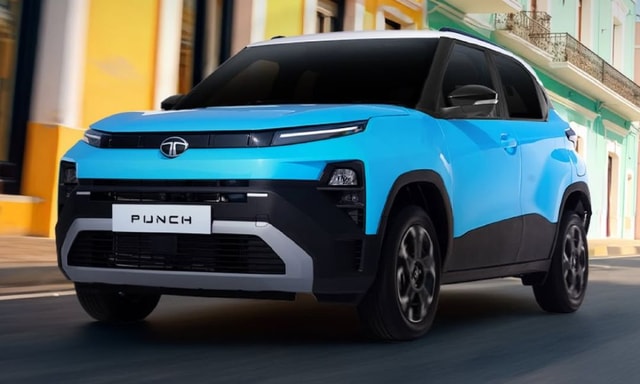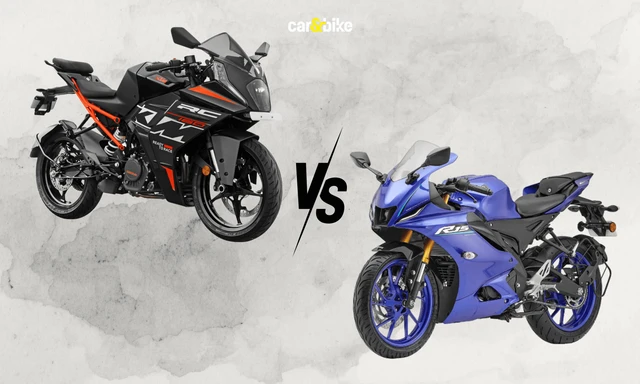How To Check A Used Car Before Buying

- We advise you to purchase any used car from authorised dealers only
- Buying a used car involves a thorough inspection of the car
- Always take a test drive to know about the exact condition of the car
Buying a used car is an affordable way of owning one, but it is a tedious process. We will always advise you to go for authorised used car sellers as they generally cover all checkpoints and take care of documentation as well, besides providing a warranty cover. In fact, the overall experience is very similar to purchasing a new vehicle. That said, it is still important for you to closely inspect the car for any possible fault and be aware about the condition of the vehicle. Here's a list you can follow to thoroughly check the car.
Also Read: Buying Used Cars; Here's A List Of Companies Which Have A Used Car Business
- Paint - The first thing that you'll notice is the exterior of the car. Scan the entire car for scratches and any odd paint work which has been done. Doing so will make you aware if the car has been involved in any accident or not.
- Check the odometer - You get inside the car and the first thing you check is the odometer reading. For instance, if a 4-5 years old car has done more than 60,000 km on the odometer, then you need to check for any major mechanical issue or repair work. You can do so by analysing the service history of the car. It is always better to purchase a used car with a service history.

Check engine for any weird noise.
- Engine - Start the engine and check how the exhaust is sounding. If it's too harsh then possibly there is too much carbon accumulation inside the engine. Also check from any odd sound from the engine bay and the check engine light when you rev it hard.
- Electricals - Check all the electricals of the car which include the cabin light, horn, headlights, taillights, wipers, fog lamps and the stereo system. Take your time and run a thorough check through all of them. It will help you in the long run
- Battery - Check out how old the battery is and then check the acid levels as it shows if the car is well maintained or not.

Check for any kind of leakage as well.
- Leakage - Check for any type of leakage. There is a chance that oil, water or lubricants might leak and replacing these systems or tanks involve high cost. Better to identify such issues before hand.
- Brakes - There are two tests for braking, one is to go on the highway and brake when at 50 kmph. Then you can also take it on a slope and apply the brake to check how effective they really are. The car should also stop on a straight line which gives an idea of the wheel alignment of the car.

Check for any sort of vibrations in the steering wheel especially when you are speeding.
- Steering - You also need to drive the car thoroughly to check for any possible fault in its steering system. Check for any vibration of play in the steering, especially at higher speeds. This generally happens when the balancing is off. Also, if the steering feels too heavy, there could be a problem of worn out steering rack and bush.
- Under-body- We also advise you to ask the seller to put the car on a hydraulic ramp and lift it, so that you can properly check the under-body of the car. This is the area where you can check for any leakage, rusted area or any open holes in the under-body. Also check for the anti-rust coating or whether it needs the same treatment to be done again as that will involve additional cost.
- Wheels- It's very important to check the condition of rims and tyres as replacing them will involve additional cost which on an average would be around 10 per cent of a used car.
- Documentation - The documents that have to be in order are registration papers, insurance papers, no objection certificate and pollution certificate. The registration papers will have the chassis number of the car. The insurance papers are a must have when you go to the RTO to transfer the car in your name and the no objection certificate which should be issued from the financial institution stating that the car loan has been paid off and the lender has absolutely no claim on the car. The pollution certificate is must at the time of the transfer. Also check whether the car in question has high security registration plates (HSRP) and Fastag attached.
Latest News
 Jaiveer Mehra | Jan 14, 2026Bajaj Chetak C25 Launched In India; Prices Start From Rs 91,399The new series is the most affordable under the Chetak family and gets a hub-mounted electric motor - a first for the Chetak family.2 mins read
Jaiveer Mehra | Jan 14, 2026Bajaj Chetak C25 Launched In India; Prices Start From Rs 91,399The new series is the most affordable under the Chetak family and gets a hub-mounted electric motor - a first for the Chetak family.2 mins read car&bike Team | Jan 14, 2026India-Made Mercedes-Maybach GLS Launched At Rs 2.75 CroreThe locally assembled Maybach GLS is Rs 42 lakh cheaper than the imported model.1 min read
car&bike Team | Jan 14, 2026India-Made Mercedes-Maybach GLS Launched At Rs 2.75 CroreThe locally assembled Maybach GLS is Rs 42 lakh cheaper than the imported model.1 min read Jaiveer Mehra | Jan 13, 2026Tata Punch Facelift Launched At Rs 5.59 Lakh; Gets Turbo-Petrol Engine OptionUpdated micro SUV gets revised styling, new features and a new turbo-petrol powertrain option.2 mins read
Jaiveer Mehra | Jan 13, 2026Tata Punch Facelift Launched At Rs 5.59 Lakh; Gets Turbo-Petrol Engine OptionUpdated micro SUV gets revised styling, new features and a new turbo-petrol powertrain option.2 mins read car&bike Team | Jan 12, 2026Updated Royal Enfield Goan Classic 350 Launched: Gets Slip And Assist ClutchThe updated Goan Classic also gets a faster Type-C charging port.1 min read
car&bike Team | Jan 12, 2026Updated Royal Enfield Goan Classic 350 Launched: Gets Slip And Assist ClutchThe updated Goan Classic also gets a faster Type-C charging port.1 min read Jaiveer Mehra | Jan 12, 2026Tata Punch Facelift Launch Tomorrow: What To ExpectUpdated internal combustion Punch gets a design in line with its larger siblings as well as a new engine option.3 mins read
Jaiveer Mehra | Jan 12, 2026Tata Punch Facelift Launch Tomorrow: What To ExpectUpdated internal combustion Punch gets a design in line with its larger siblings as well as a new engine option.3 mins read Jafar Rizvi | Jan 9, 2026KTM RC 160 vs Yamaha R15: Specifications, Features, Prices ComparedKTM’s new RC 160 goes head-to-head with the Yamaha R15 in the entry-level sportbike category. Here is how the two fare on paper.1 min read
Jafar Rizvi | Jan 9, 2026KTM RC 160 vs Yamaha R15: Specifications, Features, Prices ComparedKTM’s new RC 160 goes head-to-head with the Yamaha R15 in the entry-level sportbike category. Here is how the two fare on paper.1 min read
 Bilal Firfiray | Jan 9, 2026Toyota Urban Cruiser Hyryder: 10,000 km Long-Term ReviewAfter spending over three months and 10,000 km with the Toyota Urban Cruiser Hyryder Hybrid, we were impressed by its real-world mileage, seamless hybrid, practical comfort, and Toyota reliability. Is it the best C-SUV then?5 mins read
Bilal Firfiray | Jan 9, 2026Toyota Urban Cruiser Hyryder: 10,000 km Long-Term ReviewAfter spending over three months and 10,000 km with the Toyota Urban Cruiser Hyryder Hybrid, we were impressed by its real-world mileage, seamless hybrid, practical comfort, and Toyota reliability. Is it the best C-SUV then?5 mins read Seshan Vijayraghvan | Jan 8, 20262026 Mahindra XUV 7XO Review: Big On Tech, Bigger On ComfortThe new Mahindra XUV 7XO is flashier, feature packed, and comes with more advanced tech. But are the changes just incremental or actually substantial?1 min read
Seshan Vijayraghvan | Jan 8, 20262026 Mahindra XUV 7XO Review: Big On Tech, Bigger On ComfortThe new Mahindra XUV 7XO is flashier, feature packed, and comes with more advanced tech. But are the changes just incremental or actually substantial?1 min read Preetam Bora | Jan 10, 2026Simple One Gen 2 First Ride Review: 265 km Claimed Range!The Gen 2 model of Simple Energy’s first electric scooter gets a fair few updates, including new features, tech, more range and lighter weight. We spent a couple of hours with the Simple One Gen 2 to find out if it manages to impress.6 mins read
Preetam Bora | Jan 10, 2026Simple One Gen 2 First Ride Review: 265 km Claimed Range!The Gen 2 model of Simple Energy’s first electric scooter gets a fair few updates, including new features, tech, more range and lighter weight. We spent a couple of hours with the Simple One Gen 2 to find out if it manages to impress.6 mins read Amaan Ahmed | Jan 3, 2026VLF Mobster 135 300 KM Review: Fun But FlawedA 125 cc scooter with Italian design and Chinese genes is a rare combination, and while some may be tempted to dismiss it because of its origins, the VLF Mobster shows 125s can also be exciting – but not without compromises.11 mins read
Amaan Ahmed | Jan 3, 2026VLF Mobster 135 300 KM Review: Fun But FlawedA 125 cc scooter with Italian design and Chinese genes is a rare combination, and while some may be tempted to dismiss it because of its origins, the VLF Mobster shows 125s can also be exciting – but not without compromises.11 mins read Preetam Bora | Dec 30, 2025TVS Orbiter Review: Real-World Performance and Range TestedThe TVS Orbiter is a promising electric scooter promising decent range, practicality and pricing. But is there any reason to avoid it? We spent a few days getting to know it better.9 mins read
Preetam Bora | Dec 30, 2025TVS Orbiter Review: Real-World Performance and Range TestedThe TVS Orbiter is a promising electric scooter promising decent range, practicality and pricing. But is there any reason to avoid it? We spent a few days getting to know it better.9 mins read





















































































































